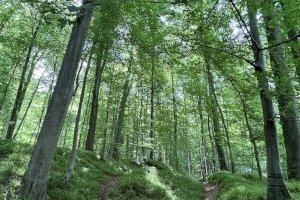
This is a hard site to rate: There is no doubt at all that these areas should be protected. But this site has been so "successful" with its many extensions that it has kind of ridiculed its on OUV: How can a site have OUV that has 82 locations in most European countries? The locations are so numerous that nobody can still consider unique so it would actually only be consequent to remove the site from the list! It implies the strong question how many locations a serial site can or should have (I couldn't answer this question in respect to the Compostela sites though I think definitely that a much stronger selection would improve the sites). To me it seems that serial sites and especially those with a long list of locations are increasing on the Unesco list and this seems to imply almost always a mediocre or weak site. To select one example pars pro toto (as the Nuragic momuments) or of a few outstanding examples (such as the Begijnhofs) seems the better way to go.
The second drawback of this site is the visitor experience and once more I am amazed how a site which offers obviously little excitement to most visitors has such a high rating on our website (similar to the Limes sites which seem rather crappy apart from Hadrians Wall). In the meanwhile we have even two of those forests in Switzerland and I had once even hiked around Bettlach but I am not sure if I entered the core zone so I hadn't counted the site yet. Therefore I took my recent trip to Brussels as an opportunity to visit not only several additional locations of the Belfries, Beguinages and Horta houses but also to add a new site by visiting the Brussels beech forest. There are several reasons to do this in Brussels: There are five areas, they are close to the city centre and easy to reach by public transport (though connections don't run very often). One of those areas lies behind the charming Groenedaal Arboretum and the local Forest museum Van de Roesbruuk, which has unsteady opening times and was closed in the morning when I passed it. Both are in the large buffer zone. Heading further west you get to the small remains of a former monastery with a nice pond and a café. When you continue along the pond you are still in the buffer zone but the woods are already quite charming and clearly dominated by beeches. I am sure the pond and the beautiful spring day added to my delight. When you arrive at the sign with the "Joseph Zwaenepoel Forest Reserve" you enter the core zone (Zone number 8 on the Unesco map) without a obvious change in the landscape. I walked around the nice Ganzepootvijver pond counterclockwise but instead of returning east to my starting point I continued northeast for about two kilometers towards two other core zone areas. First I crossed the southern end of "Sonian Forest – Grippensdelle A" from west to east before making another half-hour walk through "Sonian Forest – Grippensdelle B) roughly from south the north to take the bus back to the city center from the Foresterie bus stop.
The whole walk of about two hours was pleasant and I liked the big fallen trees left in place to decay something's forcing me to detours. The best part though was clearly the walk around the pond as I had expected. While I often try to visit all interesting parts of a serial site I have no aspiration to see very many the other 81 locations of this site. If I get the opportunity I might visit the two Swiss areas for a small hike but I will certainly try to visit the Jasmund forest of Rügen with its chalk cliffs which has been a place of dreams since my childhood because of the famous painting by Caspar David Friedrich. Nonetheless I suspect that all other locations will make for a nice hike as well but won't add much new.
Comments
No comments yet.
